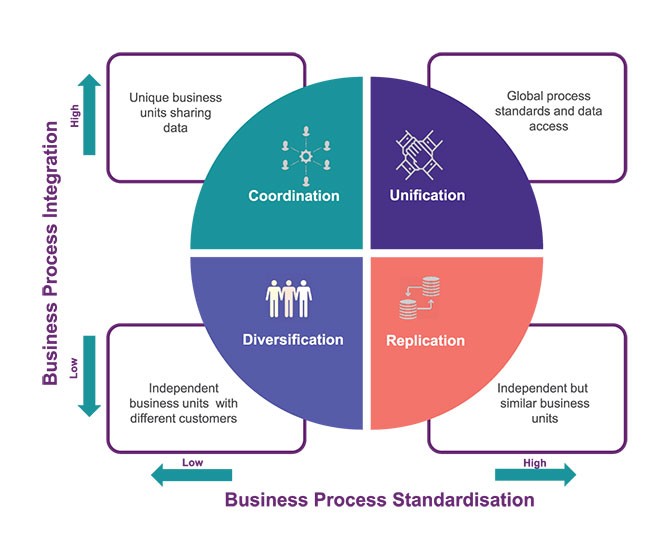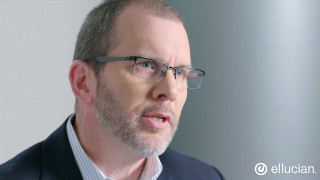Standardising change in higher education with the 'three Es'

Key takeaways
- Effective change must begin with situational awareness—i.e., know where you are starting from
- Having repeatable and reproducible functions has numerous benefits
- Enterprise architecture, Ellucian Edge and Ellucian Ethos form the “three Es” approach
A few years back, I undertook an MBA in leadership. At the time I was working for a U.K. university that kindly funded the course, but with a stipulation that the outputs were focused around the U.K. higher education sector. Throughout my studies, I read endless papers, journals and other materials about the situation of higher education environments across the globe.
One of my go-to reference points was “An Avalanche Is Coming,” by Michael Barber et al. The premise of this paper is that universities need to recognise that the environment in which they operate is changing, increasingly driven by market forces. In the preface, Lawrence Summers, a professor and the president emeritus of Harvard University, states that the approach of “steady as she goes” is no longer an option. The paper was written in 2013 but is still worth a read—and there will now be few within the higher education sector (I hope!) who don’t realise that the absolute need to be innovative, diversifiable and adaptable—in the most efficient manner possible—is the key not only to growth, but in some cases survival!
Coming from an enterprise architecture (EA) perspective, I have always advocated that effective change must begin with situational awareness—i.e., know where you are starting from, what makes you good and bad, etc. It sounds obvious, but I still wonder how many universities have a genuine understanding of how their organisation really operates. Going up a level further, a more fundamental question might be: “How many universities can fully articulate how they want/need to operate?”
For me, it’s back to week 1, day 1: “Introduction to Enterprise Architecture.” Whenever I’m asked if there is any particular text to read to get a feel for EA, I will usually point to Enterprise Architecture as Strategy. The book sets out EA from a top-down approach: understand your strategy, then define how, as an organisation, it will be delivered (i.e., the operating model, or OM). As with all good business reference books, this is distilled down into a 2x2 box for simplified OM consideration, as shown below:

I could discuss the merits of each box within the higher education sector here, but I’ll cut to the chase. For me, I believe the vast majority of universities, who need to meet the Volatility, Uncertainty, Complexity & Ambiguity challenges of our sector head-on, want to be sitting nice and snug in the Unification box! (NB: I’m happy to accept arguments for Replication, especially from collegiate organisations.)
Why, you may ask? Well, because if we are really honest with ourselves, probably around 80 percent of the functions that we perform as universities do little to add direct tangible value to our customers. Whilst they are important, they are mostly there to simply keep us running along. For example, enrolling students is one of the single most important activities within the student annual lifecycle—yet has any applicant ever, in the history of higher education, included this on their criteria when selecting where to study? The same could be said for invoicing, exam preparation, attendance monitoring, room allocations and so forth. These processes just need to be as effective and efficient as possible, and consequently if we achieve this, then the chances are we are also on the road to maximising our supporting technology!
I realise that this is a very simplistic view, but inefficient processes and duplicated efforts are often cited by business leaders as the largest drain on resources, and having repeatable and reproducible functions has numerous benefits, including:
- Fewer change considerations (remember the avalanche!)
- Reduced complexity
- Reduced overheads
- Simplified governance
Taking these into consideration we can then revisit the remaining 20 percent of functions. These are the things that we should be investing our time in—those functions that make us different and/or innovative, e.g. teaching delivery, pastoral care, industry engagement, etc.
To avoid the avalanche, it’s time for the sector to get a handle on all those process customisations and nuances and free up resources to deliver the things that actually make a difference.
Delivering the three Es
All of the above are factors recognised by Ellucian as a world-leading partner to the global higher education sector. We realise we need to support our customer base to address and overcome these issues, whilst also ensuring that we work and grow together and continue to meet the needs of the worldwide higher education community.
As part of our approach, I would summarise this as the three Es:
- Enterprise Architecture
- Edge
- Ethos
Enterprise Architecture will allow us to clearly understand how our higher education customers operate, how our solutions can support them, and how we can assist with maximising benefits from change.
Ellucian Edge will look to leverage all our combined experience to ensure that new and existing customers can benefit as quickly as possible from Ellucian’s solutions with this new, innovative delivery approach.
Ellucian Ethos will give users the ability to maximise data usage through dedicated integrations, common lexicons and reduced maintenance. A game-changer for higher education, Ethos connects people, processes and technology helping to drive student success.
Through a combination of these Es and our knowledge of the higher education sector spanning over 50 years, Ellucian is well positioned to help our customers thrive and adapt to the needs of the changing higher education landscape more effectively.
Please follow our conversation on Twitter, LinkedIn and Facebook.
References
- An Avalanche Is Coming. 2019. An avalanche is coming. [ONLINE] Available at: http://www.avalancheiscoming.com/.
- The Accountancy Partnership. 2019. Inefficiency and Duplication Top the Business Time-Wasters. [ONLINE] Available at: https://www.theaccountancy.co.uk/articles/inefficiency-and-duplication-top-the-business-time-wasters-table-5435.html.
- Ross. J et al., 2006. Enterprise Architecture as Strategy: A Foundation for Business Execution. Harvard Business Review Press.
- ResearchGate. 2016. Operating Model. [ONLINE] Available at: https://www.researchgate.net/figure/Operating-models-Source-Weil-and-Ross-2009-p35_fig1_280164106.




